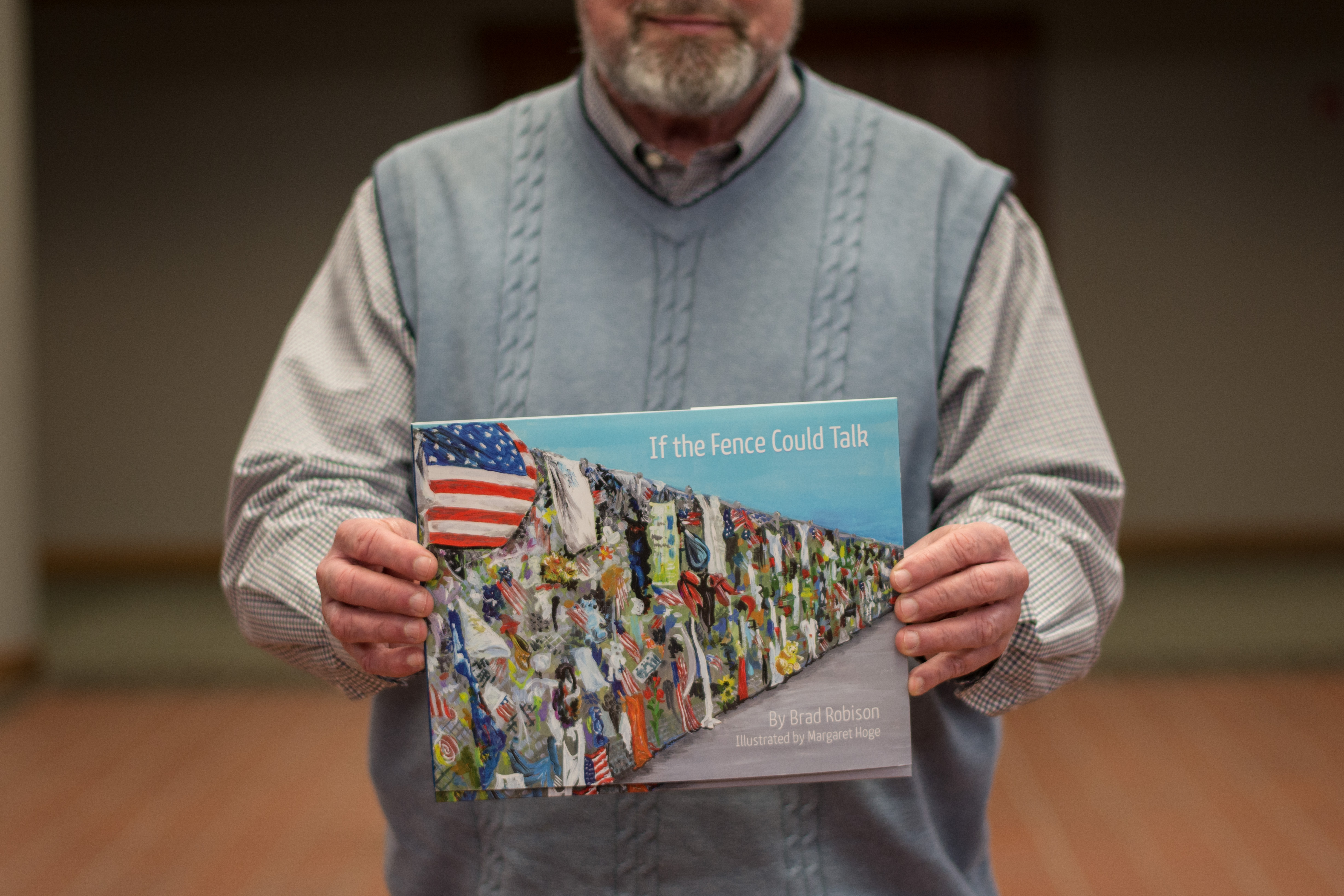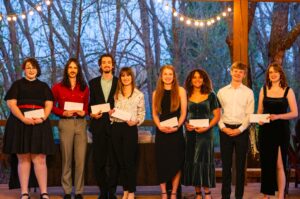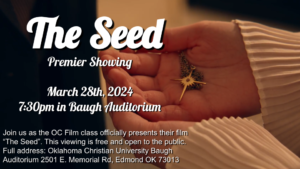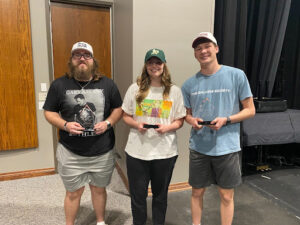To some, a fence is a perimeter used to keep something out, but to Brad Robison and many people in Oklahoma City, a fence can bring people together through inclusion and commemoration.
Robison was 14 miles away working in the Oklahoma Christian University library as library director at the time of the Oklahoma City Bombing.
“The building shook, glass, the windows rattled and it was quite a shock knowing that it had been a terrorist bombing,” Robison said. “Thinking that somebody could blow up – it ended up – 19 children, some of them three or four months old at the daycare, it was upsetting.”
In late April 1995, a fence was installed around the site of the worst act of domestic terrorism to ever occur in the United States.
More than 20 years later, Robison brought that same fence to life in his book “If The Fence Could Talk,” telling the fence’s journey from its beginning to where it stands today and memorializing those who lost their lives.
“I archived a number of items on the fence, things that were left, and I felt like I could speak best about the items in the archives that were left at the fence, so I decided ‘how do you present that in a lecture?’ And I thought, ‘Maybe the fence would talk,’” Robison said.
In his book, Robison tells the story of the Oklahoma City Bombing from the perspective of the fence that protected the crime scene and rescue site after Timothy McVeigh bombed the Alfred P. Murrah Federal Building. The bombing took place at 9:02 a.m. on April 19, 1995 and killed 168 people, including 19 children.
“I think that everyone can learn best from a narrative story as opposed to giving a textbook story of something,” Edmond native and senior early childhood education major Kelly Karguth said. “When you give objects – like a fence – a voice, it makes it more of a story that someone would tell than an event that happened, and it makes it more relatable.”
Oklahoma City area schools often take their students to see the memorial and museum during a field trip.
“To go there, even as a sixth-grader, was one of the more serious realizations that I had had as a child about tragedy and how the actions of one person can affect the lives of so many other people,” Karguth said.
The idea for Robison’s book began during his time at Rose State College in Midwest City, Oklahoma. Rose State has a series called the “Great Lecture Series” in which faculty members can submit lectures to be selected for a $100 stipend and reading at the series.
“I thought ‘Well, I could do something about the bombing,’ because I’d worked for the memorial for five years and I’ve been a volunteer since about a year after the bombing,” Robison said.
Robison’s lecture from the perspective of the fence was one of the four speeches chosen that year.
“Some faculty members and students came up to me and said ‘You should think about making that into a book,’” Robison said. “Well, I didn’t think that was possible.”
Soon after, Robison was asked to present his lecture at the University of Central Oklahoma in Edmond. He said he received the same response from the students and teachers – they wanted him to write a book.
During a visit to the bookstore at the Oklahoma City National Memorial, Robison said he came across a book published by the Oklahoma Heritage Association and illustrated by Margaret Hoge. Robison contacted Hoge and began the process of writing “If The Fence Could Talk.”
Because the Oklahoma Heritage Association is a non-profit, Robison and Hoge had to raise the funds to publish their book. According to Robison, they were able to raise $7,000 more than the required amount with the help of many donors, so that each public elementary school in Oklahoma would receive a copy of “If The Fence Could Talk.”
“We don’t want children of any age, even middle school or high school to not know about the bombing or the significance of the fence,” Robison said.
However, Robison said that the book is for all ages.
“I have found that a lot of adults like reading it, too,” Robison said. “The illustrations may imply, but it’s really kind of a general audience, more than just children.”
Compton said she believes reading the book prior to visiting the memorial is a good idea.
“I know lots of school-aged children do go on trips to there, so it would be good to place it in context for them and allow them to have a more personal experience at the memorial and at the wall,” Compton said. “Maybe even take one of their own artifacts and hang it on the fence.”
The tradition of leaving items to commemorate the victims began shortly after the bombing, when a fireman and his son left a teddy bear at ground zero – the first item attached to the fence.
“Before long the fence – all along 5th Street and Robinson and Harvey – was just amazing with the amount of things that were left: baseball bats, golf clubs, diapers, pants – you name it – business cards by the thousands,” Robison said.
According to Robison, the memorial now has scrapbooks full of the business cards, since they never throw away anything left on the fence. He said the business cards were not a way to get business, but as a way for people to leave a piece of themselves.
Today, the section of fence standing outside the Oklahoma City National Museum and Memorial holds items left by visitors, survivors and victim’s family members.
“The fence, when you first look at it, is very beautiful, and I really like that because even though it’s there to commemorate something so tragic, it can also be so beautiful in the way that’s it’s decorated, and it gives hope to the people that look at it,” Karguth said.
All proceeds from Robison’s book go to the Oklahoma Heritage Association, and if it is purchased at the memorial, some proceeds go to the Oklahoma City National Memorial and Museum.
“I don’t make any money; I’ve never thought it was appropriate to make money off the bombing,” Robison said.
“If The Fence Could Talk” can be purchased at Full Circle Bookstore, Best of Books, The Oklahoma Hall of Fame, the memorial bookstore or Amazon.
“I really enjoyed the message of hope that it had at the end,” Karguth said. “It does talk about tragedies and the bad things that can happen sometimes with terrorism and just completely unjust acts, but also it talks about how what we can do as citizens around tragedies like this, how we can go back and remember to honor those people even though bad things have happened.”
For more information on the memorial, museum or fence, visit the Oklahoma City National Memorial and Museum website.















Be First to Comment